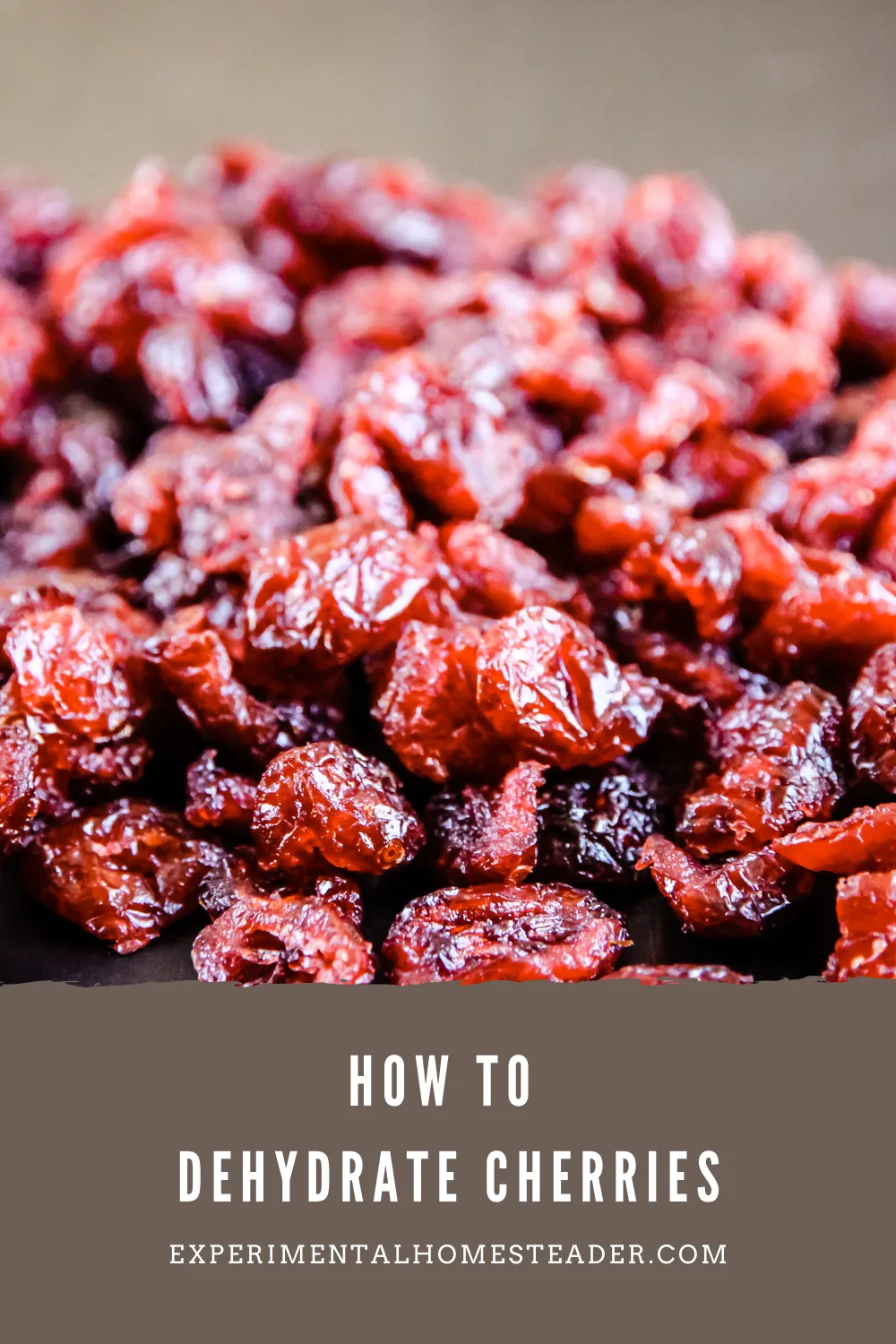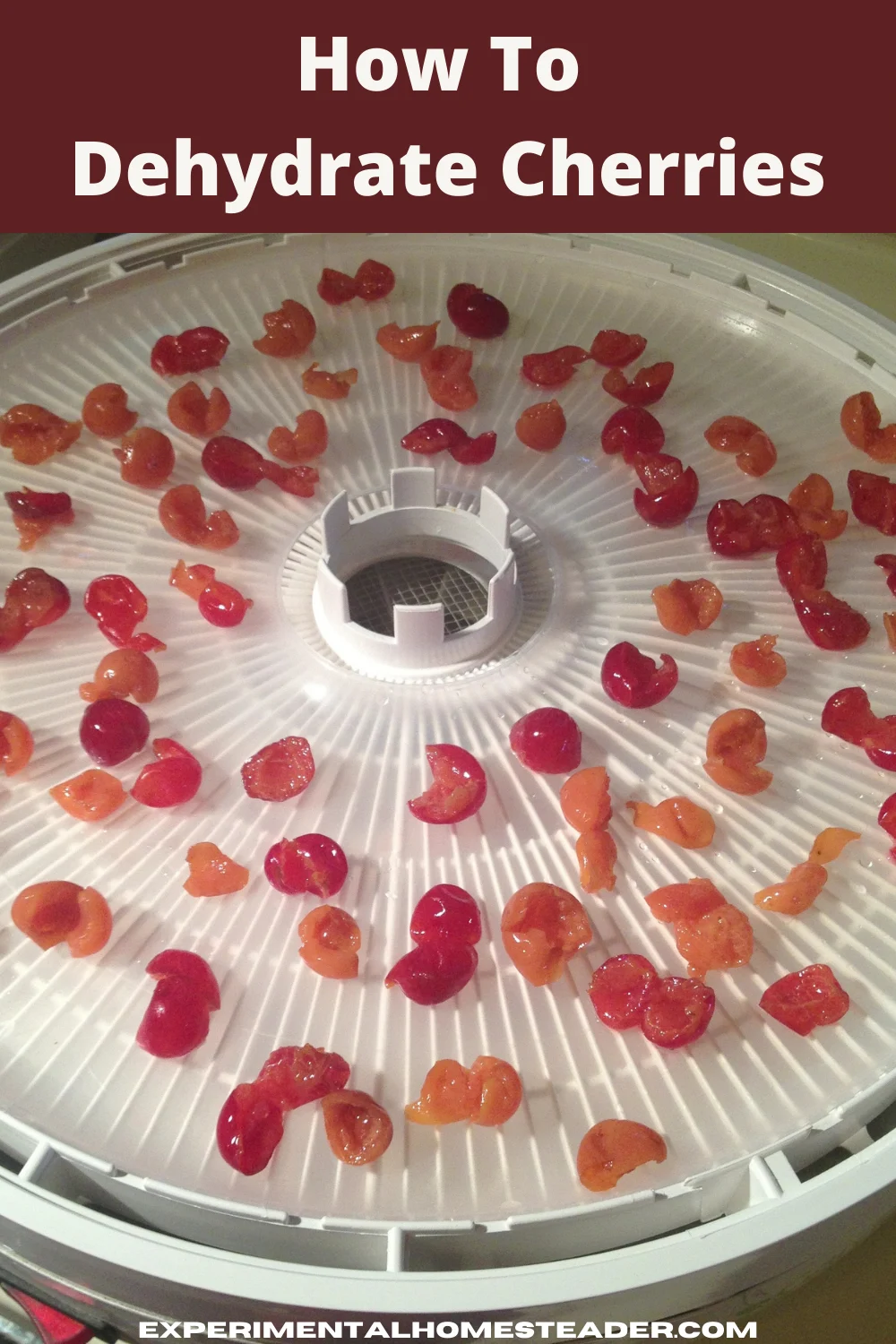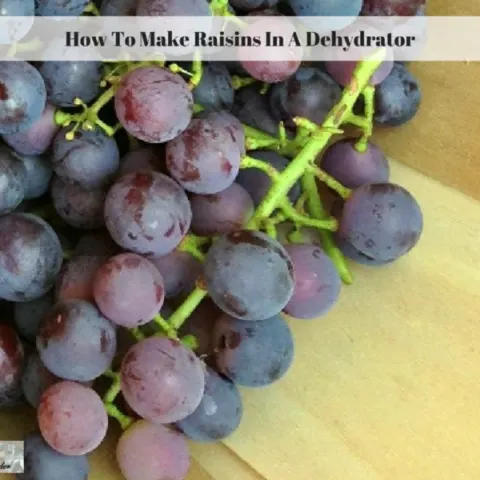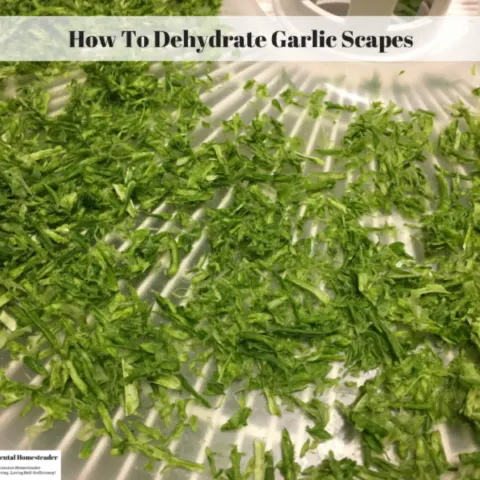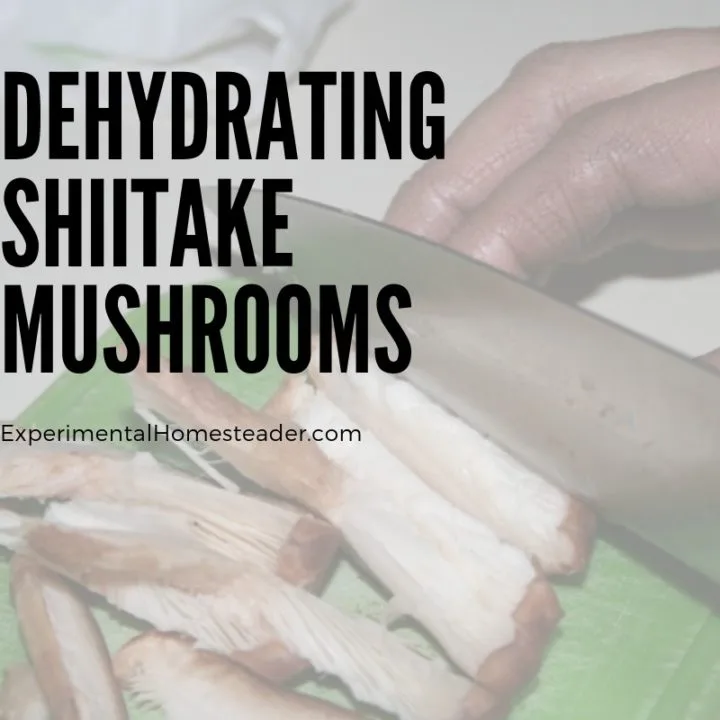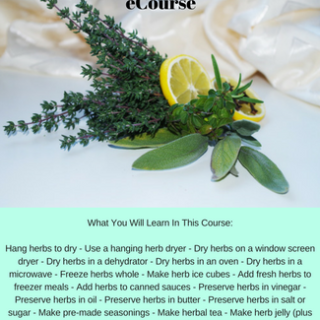Learning how to dehydrate cherries was essential the first year I had a large enough harvest off my pie cherry tree to do more than just snack on them.
I did not have enough of a harvest to can them, but I did get to make two cherry pies, about a quarter gallon of five spice cherries and a batch of Five Spice Cherry Vanilla Ice Cream.
After making the ice cream, I had a few five spice cherries left. There was not enough to can them, but I hated to see them go to waste.
I looked up recipes that used cherries and decided to make cherry muffins - the problem was it is better to use dried cherries in muffin recipes instead of fresh because of the moisture content difference.
Now you may be thinking I could use less liquid in the recipe and that would make a difference, but you see, if I were to miscalculate I would end up with a ruint batch of muffins. That is why I decided to dehydrate them not to mention if I ended up with more dehydrated cherries than I needed I could store them for use later on.
Methods For Dehydrating Cherries
Dehydrating cherries is really easy - especially if you have a good dehydrator - and if you don't try using the oven on the lowest setting you have or - better yet - lay them out on a clean window screen or drying rack in the sun.
You will want to cover them with screen or similar material to keep bugs off while they are drying.
It is best to lay the cherries so they are spread open because - depending on the method you use - they can take a little time to get leathery enough to safely store.
If you are using a dehydrator with a thermometer, here is how you do it.
Print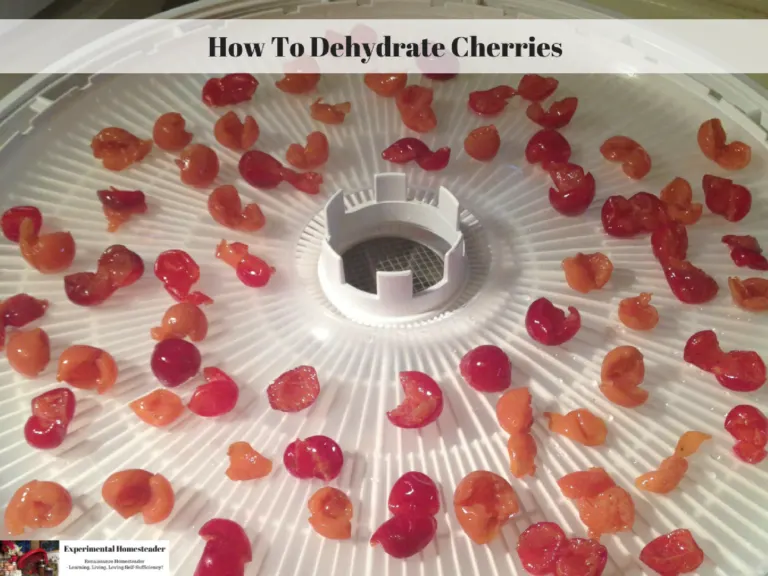
How To Dehydrate Cherries
Ingredients
- Fresh pitted cherries
Instructions
- First, pit the cherries and make sure they are bug free.
- Rinse them off under cold running water.
- I used my Five Spice Cherries, so these steps were already done.
- I did have to drain the liquid off mine and remove the spices.
- You do not need to pretreat cherries with any type of fruit preservative such as Fruit Fresh however there is no reason why you can't pre-treat them if you wish.
- Once the cherries are clean, drained and ready to go, lay them in a single layer on the dehydrator tray. Try to keep them from touching.
- Once the trays are all full - or you are out of cherries - put the lid on the dehydrator and set the thermostat to 160 degrees F.
- Dry them at this temperature for two to three hours, but be sure to check on them about every half hour just in case they dry faster than you anticipate that they will.
- After three hours, if they are not dry, turn the thermostat down to 130 degrees F until the cherries are pliable, leathery and have no pockets of moisture.
- Allow them to remain in the dehydrator until they are cool, then place them in an airtight container.
- I use glass canning jars with plastic lids. Be sure to label them, put a date on them and store them in a cool, dark and dry place.
- As an alternative you can freeze dehydrated foods.
How To Dehydrate Food
How To Make Raisins In A Dehydrator
Learn how to make raisins in a dehydrator. Learning how to make your own raisins from grapes is easy not to mention they are delicious!
How To Dehydrate Garlic Scapes
Garlic scapes are a gourmet seasoning that come on once a year in the spring. Learn another method for garlic scapes storage for year round use.
Dehydrating Apples
Have you ever wondered about dehydrating apples? Learn how to dehydrate apples, how to store them and why you should dehydrate them.
Reusable Bakery Trays Make Great Produce Storage Trays
Bakery trays make great reusuable produce storage trays for root cellars or even for storing fruits or vegetables during the food preservation process.
How To Dry And Store Homemade Noodles
Learn how to dry homemade pasta plus the best method for storing homemade noodles so they stay fresh for up to six months!
Food Dehydration Tutorial
In this food dehydration tutorial you will not learn how to use a food dehydrator, but instead you will learn how to get started and why you should do it!
Four Factors That Affect Food Storage
Understanding the four factors that affect food storage is essential for keeping your food safe, especially if you intend to store it long term.
Keeping Dehydrated Food Fresh: A Guide
Master the art of keeping dehydrated food fresh: preserve flavor, extend shelf life, and perfect storage techniques in our ultimate guide.
Canning Broccoli Is No Longer Safe But You Can Still Preserve It
Although canning broccoli was once considered safe, times have changed thus freezing, dehydrating or freee drying broccoli is recommended.
Preserving and Transforming Meals with Eggplant from Food Storage
Get creative in the kitchen with preserved eggplant. Explore the endless possibilities of transforming meals with eggplant from food storage.
Preserving Herbs For Winter Use eCourse
Do you love fresh herbs but wonder if there is an easy way to preserve them for the winter?
Do you seek other ways to use herbs other than just as a seasoning on food?
There are so many ways to preserve herbs for winter use – from various methods of drying them to freezing them, but it doesn’t end there.
Some of the best ways to preserve herbs in right in the foods you would normally incorporate herbs into – pre-made seasonings, teas, butter or oil.
Then this is the course for you!
What You Will Learn In This Course:
Hang herbs to dry
Use a hanging herb dryer
Dry herbs on a window screen dryer
Dry herbs in a dehydrator
Dry herbs in an oven
Dry herbs in a microwave
Freeze herbs whole
Make herb ice cubes
Add fresh herbs to freezer meals
Add herbs to canned sauces
Preserve herbs in vinegar
Preserve herbs in oil
Preserve herbs in butter
Preserve herbs in salt or sugar
Make pre-made seasonings
Make herbal tea
Make herb jelly (plus tips on how to use these)




